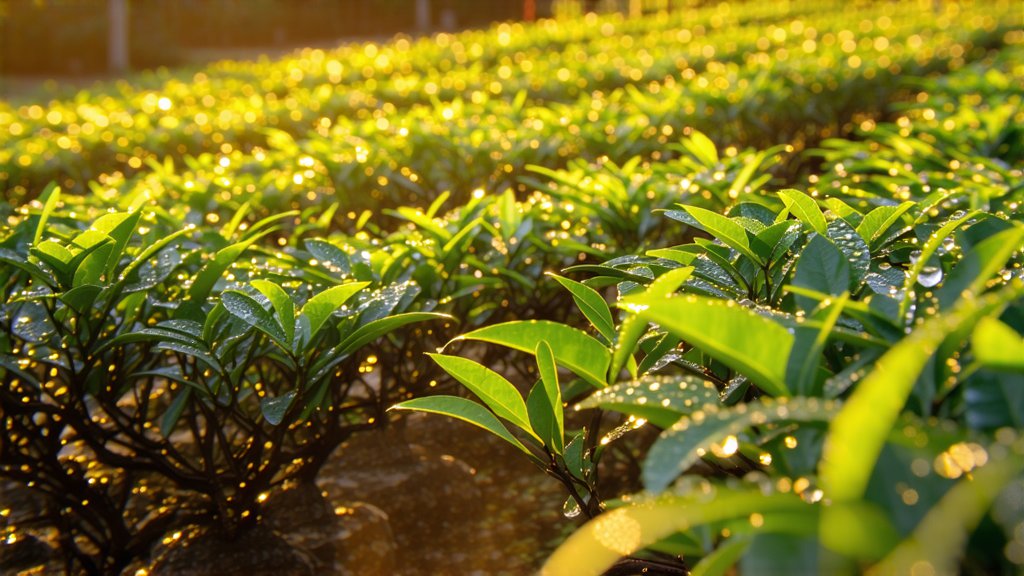
In the vast and diverse landscape of Chinese tea culture, few varieties have achieved the international acclaim and enduring legacy that Keemun Black Tea enjoys. This exquisite tea, hailing from the picturesque mountains of Anhui province in Eastern China, stands as a testament to centuries of meticulous cultivation, craftsmanship, and cultural significance. As we embark on a journey through the annals of this revered beverage, we unravel the intricate tapestry of its history, delve into the nuanced varieties it encompasses, explore the meticulous process that transforms simple leaves into a symphony of flavors, and finally, guide you through the art of appreciating Keemun's unique character through proper tasting techniques.
A Glimpse into History
The story of Keemun Black Tea begins in the early 19th century, during the Qing Dynasty, amidst the rugged terrain of the Keemun Mountains. It was here that tea farmers stumbled upon a natural mutation of the Camellia sinensis plant, which produced leaves with distinctive golden tips. These serendipitous findings set the stage for what would become one of China's most celebrated black teas. The name "Keemun," derived from the pinyin transliteration of the mountain's name, has since become synonymous with quality and sophistication in the world of tea.
Keemun's rise to prominence was further propelled by its introduction to Western markets in the mid-1800s. British tea merchants, recognizing its exceptional taste and aroma, eagerly imported it, making Keemun a staple in European tea culture. Its popularity spread rapidly, earning it the moniker "Prince of Teas" and solidifying its position as a symbol of luxury and refinement.
Varieties Within the Spectrum
Keemun Black Tea is not a monolith; rather, it encompasses a range of sub-varieties, each with its own unique characteristics. Among these, two primary types stand out:
-
Keemun Hao Ya (Grade A): This is the crème de la crème of Keemun teas, composed solely of young leaves and buds covered in downy golden tips. It boasts a rich, full-bodied flavor profile with hints of orchid and a lingering sweetness, making it highly sought after by connoisseurs.
-
Keemun Yin Hao (Grade B): Slightly more robust than its Hao Ya counterpart, Yin Hao includes a mix of tender buds and mature leaves. Its taste is characterized by a balance of maltiness and floral notes, offering a slightly less expensive yet equally delightful alternative for enthusiasts.
Both varieties share a common thread: they are crafted using traditional methods that emphasize the preservation of the leaf's natural essence, resulting in a tea that is both aromatic and flavorful.
The Alchemy of Craftsmanship
The transformation of Keemun tea leaves from their green state to the black hue characteristic of black tea involves a series of meticulous steps, each contributing to the final product's complexity and depth. Here’s an overview of the traditional production process:
-
Withering: Freshly采摘ed leaves are spread out in a well-ventilated area to wilt. This process reduces moisture content and initiates enzymatic reactions that will later contribute to the tea's color and flavor.
-
Rolling: The withered leaves are then rolled either by hand or machine to break down cell walls, facilitating oxidation. This step also shapes the leaves and releases essential oils, enhancing aroma.
-
Oxidation: Rolled leaves are left to oxidize under controlled conditions. This crucial stage develops the tea's characteristic dark color and complex flavors. The duration varies depending on desired flavor profiles but typically lasts several hours.
-
Fixation: To halt oxidation, the leaves are subjected to high temperatures, either through pan-firing or steaming. Fixation locks in the tea's flavor and aroma.
-
Sorting and Grading: After fixation, the tea undergoes rigorous sorting based on leaf size, shape, and quality. Only the finest leaves make it into premium grades like Hao Ya.
-
Drying: Finally, the sorted tea is dried to reduce moisture content further, ensuring stability and shelf life.
Each step in this process demands precision and expertise, reflecting the deep respect for tradition and quality upheld by Keemun tea producers.
The Art of Tasting Keemun Black Tea
To truly appreciate Keemun Black Tea, one must engage in a sensory exploration that goes beyond mere sipping. Here’s a guide to savoring its multifaceted charm:
-
Observation: Begin by examining the dry leaves. High-quality Keemun should exhibit a mix of golden and dark brown hues, indicative of its careful processing.
-
Infusion: Use freshly boiled water cooled to around 90-95°C (194-203°F) for brewing. Place approximately 3 grams of loose leaf tea per 150 ml of water. Steep for 3-5 minutes, adjusting time according to personal preference for strength.
-
Aroma: Before taking your first sip, inhale deeply to capture the tea's bouquet. Keemun often exudes a blend of sweet orchid fragrance intertwined with subtle fruity undertones.
-
Tasting: Take small sips, allowing the tea to coat your palate. Notice the initial burst of flavor, which may include malty, fruity, or floral notes, followed by a smooth, lingering finish. Pay attention to the tea's body—whether it feels light and delicate or full and robust—and its aftertaste.
-
Appreciation: Reflect on the overall experience, considering how the tea's appearance, aroma, taste, and mouthfeel interact harmoniously to create a unique sensory journey.
In conclusion, Keemun Black Tea is not just a beverage; it embodies a rich cultural heritage, a testament to centuries-old agricultural practices, and an embodiment of artisanal excellence. From its humble beginnings in the misty mountains of Anhui to its esteemed place in global tea culture, Keemun continues to captivate hearts and minds alike. Whether you're a seasoned tea aficionado or a curious newcomer, understanding and experiencing Keemun Black Tea offers a gateway into the profound beauty and diversity of Chinese tea traditions.